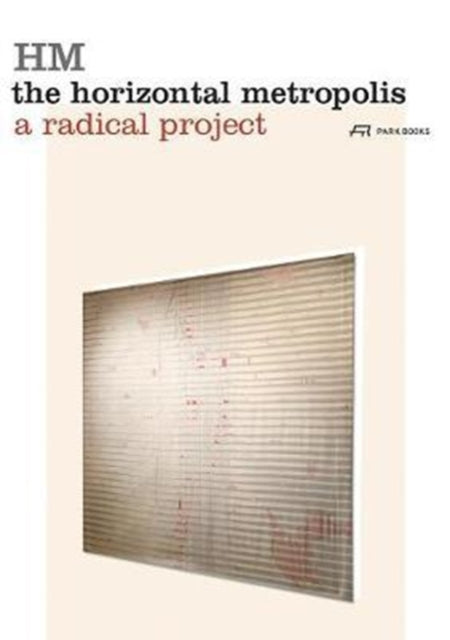Shulph Ink
Horizontal Metropolis: A Radical Project
Horizontal Metropolis: A Radical Project
YOU SAVE £7.93
- Condition: Brand new
- UK Delivery times: Usually arrives within 2 - 3 working days
- UK Shipping: Fee starts at £2.39. Subject to product weight & dimension
Bulk ordering. Want 15 or more copies? Get a personalised quote and bigger discounts. Learn more about bulk orders.
Couldn't load pickup availability
- More about Horizontal Metropolis: A Radical Project
The term "desakota" was coined by Terry McGee in 1990 to describe areas outside the periurban zone, characterized by high population density and intensive agricultural use. The new book "The Horizontal Metropolis" investigates such areas alongside examples in the US, Italy, and Switzerland, highlighting their advantages in economic, ecological, and social aspects. It reflects a vision of global urbanization that no longer allows for outside areas and will test the urban ecosystem to its limits.
Format: Paperback / softback
Length: 232 pages
Publication date: 17 February 2020
Publisher: Park Books
Two contrasting terms are combined to conjugate the traditional idea of metropolis, which is characterized by its centrality within a vast territory, hierarchical organization, density, verticality, and production through polarization, with horizontality, which represents a more diffuse, isotropic urban condition where the center and periphery blur. Beyond a simplistic opposition between the center and the periphery, the concept of a horizontal metropolis reveals the dispersed condition as a potential asset rather than a limit in constructing a sustainable and innovative urban dimension.
In the early 1990s, urban researcher Terry McGee at the University of British Columbia coined the term "desakota." This term is derived from Indonesian desa, meaning village, and kota, meaning city. Desakota areas typically occur in Asia, particularly South East Asia. These areas are situated outside the periurban zone, often sprawling alongside arterial and communication roads, sometimes spanning multiple agglomerations. They are characterized by high population density and intensive agricultural use, yet differ from densely populated rural areas by possessing more urban-like characteristics.
The recently published book "The Horizontal Metropolis" explores these desakota areas alongside examples in the United States, Italy, and Switzerland. The study highlights the advantages of the concept and its relevance in economic, ecological, and social aspects. The concept reflects a vision of global urbanization that no longer allows for outside areas and will test the urban ecosystem to its limits.
One of the key advantages of a horizontal metropolis is its ability to accommodate a diverse range of activities and functions within a relatively small area. This can lead to increased efficiency, productivity, and economic growth. By spreading out infrastructure and services, a horizontal metropolis can reduce congestion, improve air quality, and promote better access to resources.
In terms of ecological sustainability, a horizontal metropolis can be more environmentally friendly than a traditional centralized urban structure. By promoting mixed-use development and reducing the distance between residential, commercial, and industrial areas, a horizontal metropolis can reduce the need for transportation and promote the use of public transportation and active modes of transportation such as walking and cycling. This can also help to reduce greenhouse gas emissions and improve air quality.
Furthermore, a horizontal metropolis can promote social cohesion and diversity. By creating a more inclusive and accessible urban environment, a horizontal metropolis can reduce social inequalities. This can lead to a stronger sense of community, improved social mobility.
In conclusion, the concept of a horizontal metropolis offers a promising approach to urban development that combines the advantages of centr. Its ability to accommodate a diverse range of activities and functions within a relatively small area, promote ecological sustainability, and promote social cohesion and diversity makes it an attractive option for cities seeking to create a more sustainable and innovative future. As the global urban population continues to grow, the challenges of urbanization will only intensify, and the need for innovative solutions such as the horizontal metropolis will become increasingly important.
Weight: 664g
Dimension: 175 x 241 x 16 (mm)
ISBN-13: 9783038600626
This item can be found in:
UK and International shipping information
UK and International shipping information
UK Delivery and returns information:
- Delivery within 2 - 3 days when ordering in the UK.
- Shipping fee for UK customers from £2.39. Fully tracked shipping service available.
- Returns policy: Return within 30 days of receipt for full refund.
International deliveries:
Shulph Ink now ships to Australia, Belgium, Canada, France, Germany, Ireland, Italy, India, Luxembourg Saudi Arabia, Singapore, Spain, Netherlands, New Zealand, United Arab Emirates, United States of America.
- Delivery times: within 5 - 10 days for international orders.
- Shipping fee: charges vary for overseas orders. Only tracked services are available for most international orders. Some countries have untracked shipping options.
- Customs charges: If ordering to addresses outside the United Kingdom, you may or may not incur additional customs and duties fees during local delivery.


